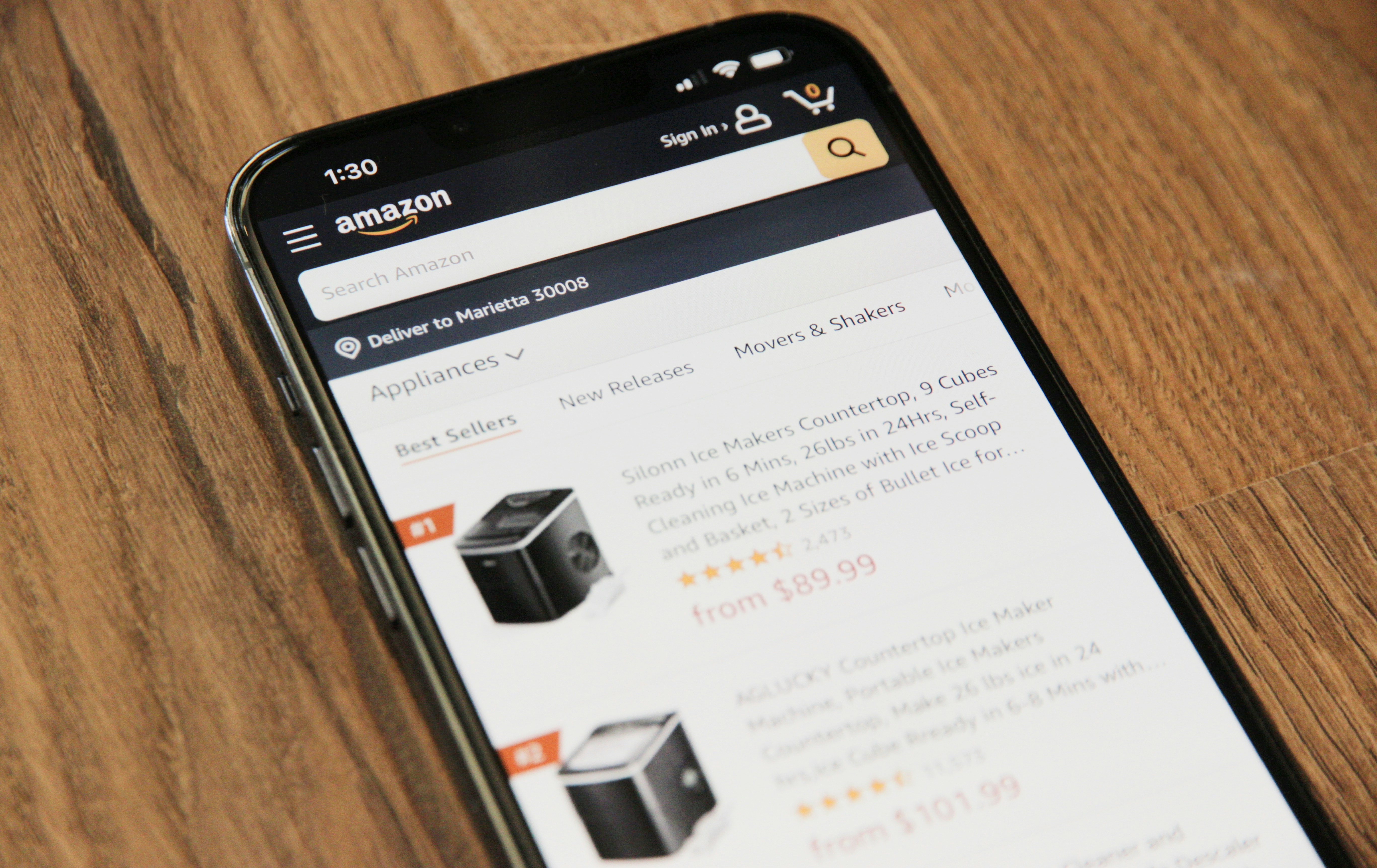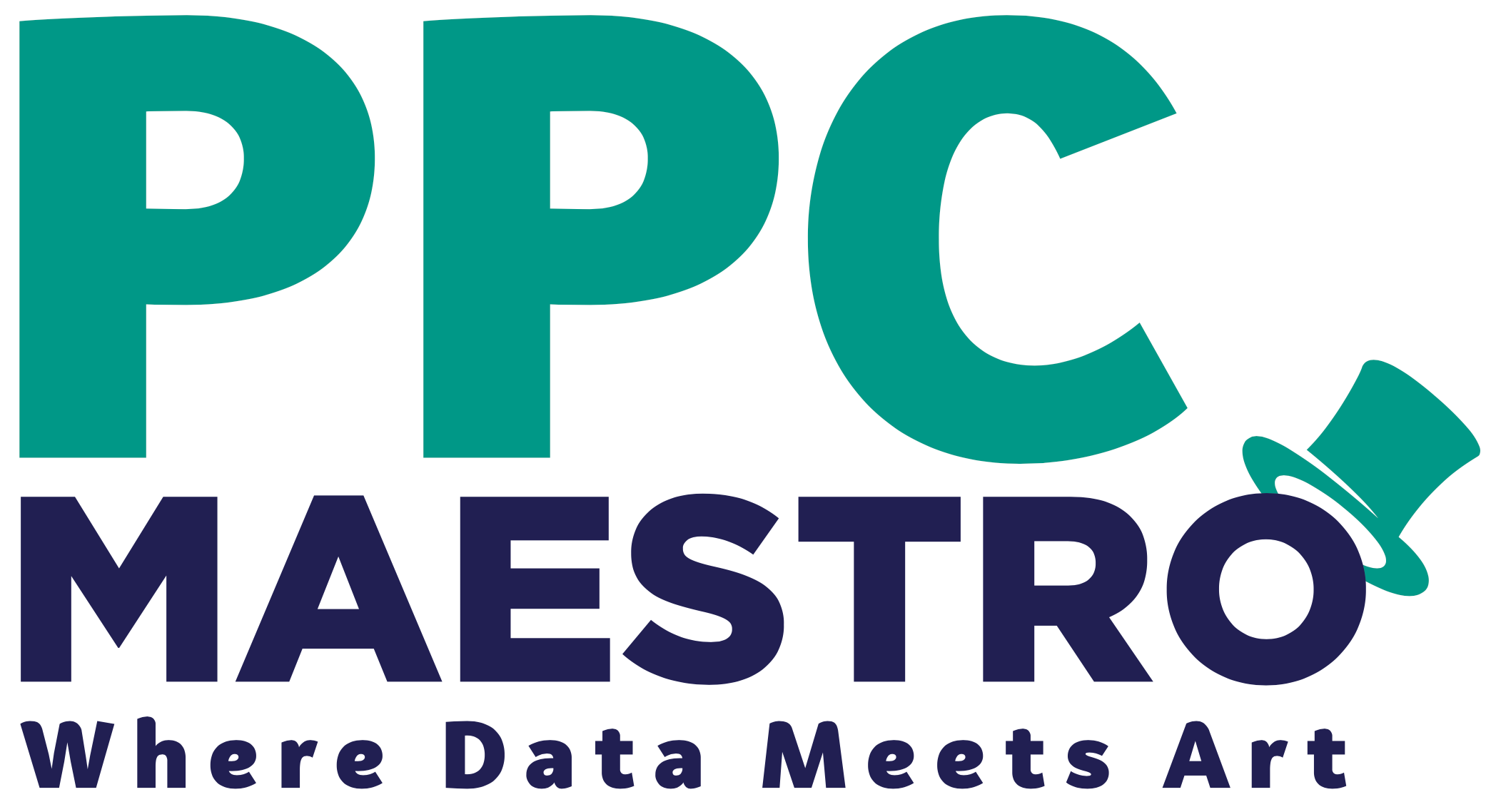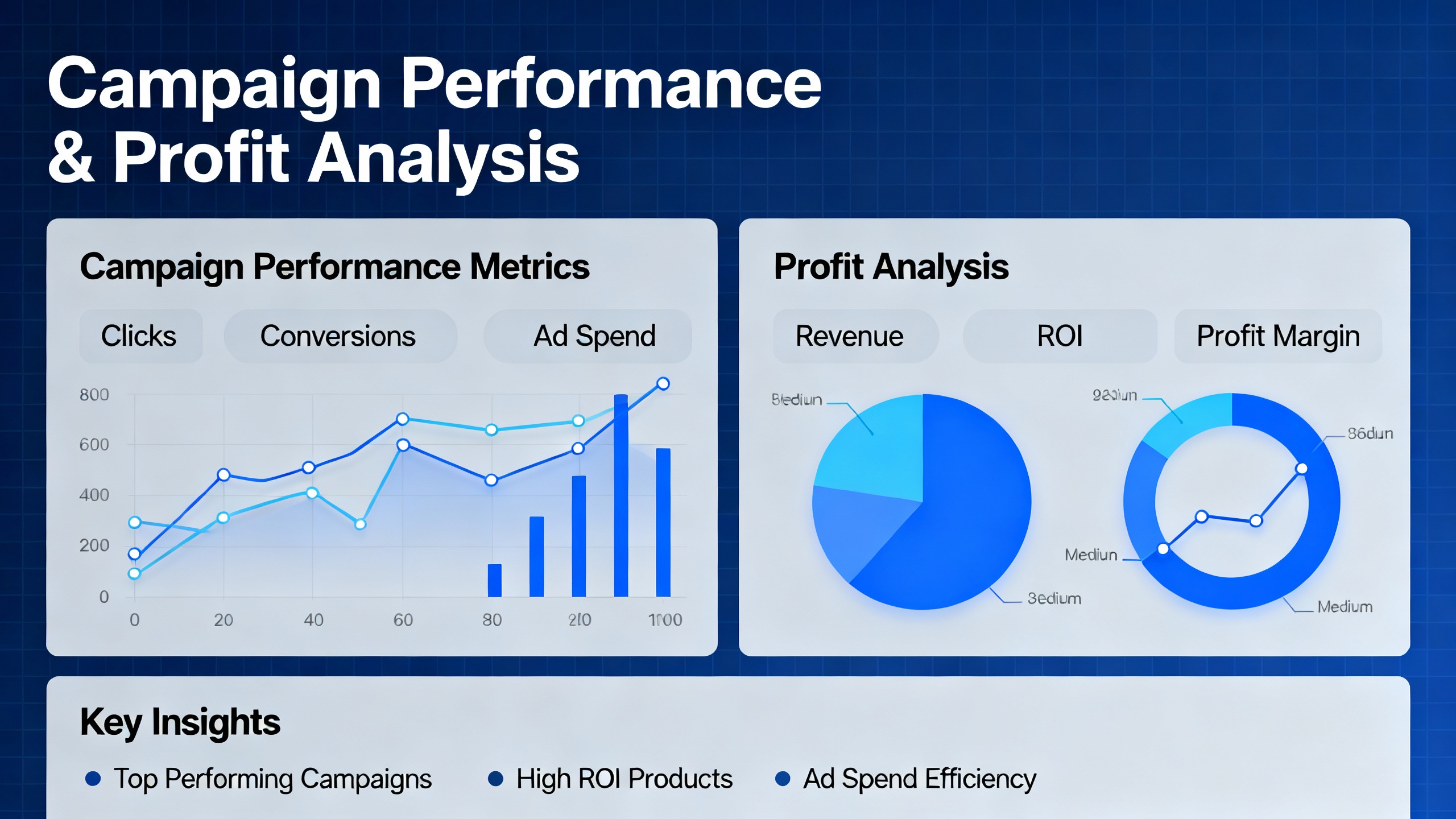To reduce ACoS in Amazon ads, eliminate wasted spend on non-converting search terms through negative keyword mining, tighten match type targeting, adjust bids based on profitability metrics rather than position alone, and monitor TACoS (Total Advertising Cost of Sales) alongside ACoS to protect overall margin while scaling winning products. If you’re wondering how to reduce ACoS Amazon ads, these steps form the foundation for long-term profitability.
Introduction: The Hidden Cost of ACoS Tunnel Vision
When analyzing Amazon advertising accounts, a pattern emerges consistently: sellers focus intensely on lowering their ACoS percentage while overlooking where their budget actually goes. Understanding how to reduce ACoS Amazon ads begins with identifying wasted spend and reallocating it toward high-converting keywords.
According to Amazon's own advertising best practices documentation, inefficient keyword targeting represents one of the top three factors driving unnecessary ad spend. In recent account audits we've conducted, non-converting search terms frequently consume 15-30% of total campaign budgets—spend that could fund profitable keywords instead.
The challenge isn't just about achieving a lower ACoS number. It's about understanding which clicks are profitable and systematically redirecting budget toward them while eliminating waste.
About the author: Bernard Nader is Founder of PPC Maestro and creator of the Profit Feedback Loop framework, a systematic approach to Amazon PPC optimization used by seven- and eight-figure sellers. His methodology prioritizes contribution margin and total advertising efficiency over isolated ACoS metrics.
This guide provides seven specific tactics to reduce ACoS while maintaining—or improving—your overall profitability and sales velocity.
Early Access Opportunity
Before we dive into tactics, if you'd prefer a personalized analysis of where your ad spend is going, we offer complimentary account audits. Book a 30-minute call or download our wasted spend calculator and optimization SOPs to start your own audit.

How to Use This Guide
Each tactic below follows a consistent structure:
The inefficiency: What's causing elevated ACoS
The fix: Specific steps to address it
Implementation note: Where this fits in your optimization workflow
Most tactics can be implemented independently, though the greatest impact comes from combining multiple approaches in sequence.
1) Eliminate Non-Converting Search Terms Systematically
The inefficiency
Long-tail and tangential search queries generate clicks but rarely convert. These "bleeder terms" accumulate slowly—$8 here, $15 there—but collectively drain substantial budget over 30-60 days.
The fix
Implement weekly negative keyword mining using search term reports:
Step 1: Export your search term report from Amazon Advertising console (Advertising → Campaign Manager → Search Term Report, set to last 30 days)
Step 2: Filter for terms meeting these criteria:
Spend ≥ $20
Orders = 0
Clicks ≥ 5
Step 3: Review filtered terms for relevance. Add irrelevant terms as negative keywords using the bulk operations file rather than manual entry.
Step 4: Apply negatives at the appropriate level:
Campaign-level negatives for terms irrelevant to that specific campaign
Ad group-level negatives for finer control
Portfolio-level negative lists for brand exclusions or competitor terms
Implementation note
This forms the foundation of the Profit Feedback Loop optimization cycle. Weekly execution prevents waste from accumulating while maintaining discovery in broad-match campaigns. It’s also one of the simplest yet most effective ways to learn how to reduce ACoS Amazon ads without cutting ad spend.
Time investment: 15-20 minutes weekly once your process is established.
2) Apply Match Type Discipline Based on Funnel Position
The inefficiency
Broad match and loose phrase match campaigns excel at discovery but generate high ACoS when applied indiscriminately across all products and keywords. Conversely, over-restricting to exact match too early limits valuable learning.
The fix
Structure match types by campaign objective rather than applying one approach universally:
Discovery campaigns (broad/phrase):
New product launches (first 60 days)
Testing new keyword themes
Budget: 20-30% of total ad spend
Accept higher ACoS (often 1.5-2× your target) in exchange for data
Conversion campaigns (exact/phrase):
Proven keywords with ≥10 conversions
Budget: 60-70% of total ad spend
Target: Your breakeven ACoS or better
Defense campaigns (exact):
Your brand terms
Competitor conquesting (where profitable)
Budget: 10-15% of total spend
Target: Lowest ACoS in your account
Implementation note
Migrate high-performing keywords from broad campaigns into dedicated exact-match campaigns monthly. Lower bids on the broad campaign for those terms by 20-30% to reduce cannibalization while maintaining discovery potential. This structure plays a big role in how to reduce ACoS Amazon ads efficiently.
3) Bid to Profitability, Not Position
The inefficiency
Default bid strategies chase top-of-search placement or specific ACoS targets without accounting for unit economics. A product with 35% contribution margin requires different bid management than one with 60% margin, even if both have identical ACoS.
The fix
Calculate and optimize toward profit per click rather than position-based goals:
Profit per Click Formula:
Profit per Click = (Contribution Margin × Conversion Rate) - Cost per Click
Example:
Product contribution margin: $18 per unit
Keyword conversion rate: 12%
Current CPC: $1.85
Profit per click = ($18 × 0.12) - $1.85 = $0.31 profit per click
Bid adjustment rules:
Positive profit per click: Gradually increase bids by 10-15% weekly until profit per click peaks or CPC becomes unprofitable
Negative profit per click: Decrease bids by 15-25% or pause if multiple bid reductions don't achieve profitability
Break-even: Evaluate keyword strategically—does it drive ranking velocity or halo sales that justify maintaining position?
Implementation note
This approach directly addresses the profit-first optimization principle detailed in our profit optimization methodology. Review profit per click for your top 20% highest-spend keywords bi-weekly. Understanding profit per click is essential in learning how to reduce ACoS Amazon ads sustainably.
Data requirement: You need reliable conversion rate data by keyword, which typically requires ≥50 clicks or 30 days of runtime.
4) Build Scalable Negative Keyword Architecture
The inefficiency
Adding negative keywords one at a time after problems appear is reactive and doesn't scale. By the time you spot and negate a problem term, it may have already consumed $50-200 in wasted clicks.
The fix
Establish permanent negative keyword lists organized by category:
List 1 - Universal Negatives:
Obvious non-buyers: "free," "cheap," "DIY," "alternative to," "vs"
Apply to all campaigns
List 2 - Competitor Brands:
Competitor brand names (when you're not strategically conquesting)
Apply to brand defense and high-ROAS campaigns
List 3 - Incompatible Product Attributes:
Wrong colors, sizes, materials your catalog doesn't carry
Update monthly as you identify new patterns
List 4 - ASINs:
Your own ASINs that don't convert well
Competitor ASINs with poor conversion history
Implementation note
Amazon allows shared negative keyword lists at the portfolio level. Create these lists once, then apply them to relevant campaigns in bulk. Update lists during your weekly negative keyword mining sessions described in Tactic #1. This proactive system is part of how to reduce ACoS Amazon ads for long-term efficiency.
External resource: Amazon's negative keyword guide provides technical details on implementation and list limits.
5) Isolate and Scale Your Winners
The inefficiency
High-performing search terms get buried in campaigns alongside discovery keywords, leading to:
Budget starvation (the campaign daily budget caps before winners get full spend)
Inefficient bid management (you can't optimize winners independently)
Diluted performance reporting
The fix
Create dedicated "winners" campaigns for your top-performing search terms:
Qualification criteria for winner status:
≥20 conversions in last 60 days
ACoS ≤ your target threshold
Consistent week-over-week performance (not a one-time spike)
Migration process:
Create new exact-match campaign: "[Product Name] - Winners"
Add qualifying keywords with current bids +10%
Set daily budget 2-3× higher than historical daily spend
Add those exact keywords as negative phrase matches in the original broad/phrase campaigns (prevents double-serving)
Monitor for 7 days, then optimize bids based on impression share and profit per click
Implementation note
This isolation technique allows you to:
Protect winners from budget competition
Apply different bid strategies to discovery vs. conversion keywords
Scale winners aggressively without inflating spend on unproven terms
Review your winner campaign composition monthly and migrate new qualifiers. This step demonstrates a data-driven approach on how to reduce ACoS Amazon ads while scaling profitably.
6) Optimize Listing Conversion Rate as an ACoS Lever

The inefficiency
PPC optimization often ignores the landing experience. Even perfectly targeted keywords deliver poor ACoS when the product detail page doesn't convert browsers into buyers.
The fix
A conversion rate improvement of even 2-3 percentage points materially reduces your effective cost per acquisition—making previously unprofitable keywords profitable without touching bids.
High-impact listing elements to test:
Main image:
Research by Jungle Scout's 2024 seller survey indicates that main image quality is the #1 factor customers cite for clicking a product. Test lifestyle images vs. white background, different angles, and feature callouts.
Title optimization:
Include your highest-spend keywords in position 1-3 of the title for relevance signaling. Test title structures quarterly based on search term report data.
Bullet points:
Front-load benefits (not features) in bullets 1-2. Match language to top-converting search queries from your campaigns.
A+ Content:
Products with A+ Content see approximately 3-10% higher conversion rates according to Amazon's Brand Registry resources—this compounds your PPC efficiency significantly.
Implementation note
Prioritize listing optimization for:
Products receiving >$500/month in ad spend
Items with <10% conversion rate (check Business Reports → Detail Page Sales and Traffic)
Your highest-margin products where conversion lift has maximum profit impact
Cross-functional requirement: Listing optimization requires coordination with your creative and product teams. Build this into your quarterly planning rather than treating it as purely a PPC initiative. Conversion-focused listings are a hidden lever in how to reduce ACoS Amazon ads by improving buyer trust and relevance.
7) Use TACoS as Your Profitability Guardrail
The inefficiency
Optimizing ACoS in isolation creates a dangerous blind spot: you can achieve a "great" 18% ACoS while total advertising cost as a percentage of all sales (TACoS) creeps upward, indicating declining organic rank and increasing dependency on ads.
The fix
Monitor TACoS (Total Advertising Cost of Sales) alongside ACoS:
TACoS Formula:
TACoS = Total Ad Spend ÷ Total Sales (ad-attributed + organic)
Interpretation framework:
| TACoS Trend | What It Signals | Action |
| Declining TACoS + Stable ACoS | Organic sales growing; ads driving efficient flywheel | Maintain strategy; scale budget |
| Rising TACoS + Declining ACoS | Ad-attributed sales increasing but organic declining; possible over-optimization | Review negative keywords; may be suppressing relevant traffic |
| Rising TACoS + Rising ACoS | Overall efficiency declining | Audit campaign structure; check for external factors (seasonality, competitive changes) |
Implementation note
Set TACoS targets by product margin tier:
High margin (>40% contribution margin):
Target TACoS: 12-18%
You can profitably support higher advertising intensity
Mid margin (25-40%):
Target TACoS: 8-15%
Balance advertising with operational efficiency
Low margin (<25%):
Target TACoS: 5-10%
Advertising must be highly efficient or focus on rank velocity periods only
Track TACoS in monthly reviews rather than daily optimization. Learn more about the relationship between ACoS and TACoS in strategic decision-making. Monitoring both is crucial if you want to master how to reduce ACoS Amazon ads without hurting organic growth.
Implementation Timeline: Your 30-60 Day Optimization Cycle
Combining these tactics into a systematic workflow maximizes results:
Week 1-2: Foundation
✅ Conduct negative keyword mining (Tactic #1)
✅ Export search term reports and identify winners for isolation (Tactic #5)
✅ Calculate profit per click for top 20 keywords (Tactic #3)
✅ Build permanent negative keyword lists (Tactic #4)
Week 3-4: Structure & Bids
✅ Migrate winner keywords to dedicated campaigns
✅ Audit and adjust match type distribution (Tactic #2)
✅ Implement profit-per-click bid adjustments
✅ Establish TACoS baseline and targets by product (Tactic #7)
Week 5-8: Optimization & Listing
✅ Continue weekly negative keyword mining
✅ A/B test primary listing elements for top-spend products (Tactic #6)
✅ Review TACoS trends and adjust strategy
✅ Reallocate saved budget to winner campaigns
Ongoing
Repeat the core cycle bi-weekly: mine negatives → adjust bids by profitability → review TACoS → test listings.
This becomes the operational backbone of the Profit Feedback Loop we use with partner brands—an effective roadmap for how to reduce ACoS Amazon ads step by step.
Conclusion
Reducing ACoS in Amazon advertising isn't about achieving the lowest possible percentage. It's about systematically eliminating unprofitable spend while amplifying budget toward proven, profitable customer acquisition channels. The seven tactics above give you a complete toolkit on how to reduce ACoS Amazon ads effectively and sustainably.
The seven tactics above give you a complete toolkit:
Negative keyword mining stops the bleed
Match type discipline balances discovery with efficiency
Profit-per-click bidding aligns bids with unit economics
Scalable negative architecture prevents repeat waste
Winner isolation lets you scale what works
Listing optimization multiplies PPC efficiency
TACoS monitoring protects long-term profitability
Most sellers will see measurable improvement within 30 days of implementing even three of these tactics—particularly #1, #3, and #5.
Next Steps
If you want a personalized assessment of where your ad budget is going and which tactics will deliver the fastest ROI for your specific account, we offer complimentary profit audits.
Or start immediately with our self-service resources:
Download the Wasted Spend Calculator & Optimization SOPs →
We'll show you exactly where dollars are leaking and provide a prioritized 30-day action plan.
Frequently Asked Questions
Q: What is ACoS and how is it calculated?
A: ACoS (Advertising Cost of Sales) equals total ad spend divided by attributed sales revenue. For example, spending $25 to generate $100 in sales results in a 25% ACoS. It measures advertising cost as a percentage of the revenue directly attributed to ads, helping you understand campaign efficiency at a glance.
Q: Should I always aim for the lowest ACoS possible?
A: Not necessarily. While lower ACoS reduces advertising cost as a percentage of sales, optimizing solely for minimum ACoS can limit growth and profitability. Context matters: a 25% ACoS might be excellent for a high-margin product in a launch phase but unprofitable for a low-margin commodity item. Balance ACoS with TACoS (Total Advertising Cost of Sales), contribution margin, and business objectives like ranking velocity or market share growth.
Q: What are the fastest ways to lower ACoS?
A: The fastest ACoS reduction tactics include: (1) identifying and negating high-spend zero-conversion search terms through bulk operations, (2) reducing bids by 20-30% on consistently underperforming keywords, and (3) reallocating budget to proven high-converting terms via winner isolation campaigns. These changes typically show measurable results within 2-4 weeks since they immediately reduce wasted spend without requiring extensive testing—core principles in how to reduce ACoS Amazon ads efficiently.
Q: How does improving my product listing reduce ACoS?
A: Higher conversion rates directly lower your effective cost per acquisition. If you're currently converting at 10% and improve to 13%, you're generating 30% more sales from the same ad spend—which proportionally reduces your ACoS. Additionally, improved conversion rates increase your keyword quality scores in Amazon's ad auction, often resulting in lower CPCs and better ad placement over time.
Q: What's the difference between ACoS and TACoS?
A: ACoS (Advertising Cost of Sales) = ad spend ÷ ad-attributed sales only. TACoS (Total Advertising Cost of Sales) = ad spend ÷ total sales (both ad-attributed and organic). TACoS reveals your true advertising dependency and whether your ads are generating organic momentum. Declining TACoS over time indicates healthy growth; rising TACoS suggests over-reliance on paid traffic or declining organic rank. Learn more about TACoS strategy.
Q: How often should I review and optimize my Amazon PPC campaigns?
A: Adopt a tiered review schedule: (1) Weekly: negative keyword mining and obvious performance outliers, (2) Bi-weekly: bid adjustments based on profit per click and budget reallocation, (3) Monthly: campaign structure review, match type distribution, winner migration, and TACoS analysis, (4) Quarterly: strategic assessment including listing optimization, market positioning, and seasonal planning. This balanced cadence avoids both neglect and over-optimization based on insufficient data.
Q: Can I reduce ACoS without reducing sales volume?
A: Yes, through efficiency gains rather than budget cuts. The tactics outlined—particularly negative keyword elimination, winner isolation, and listing optimization—redirect existing budget toward higher-performing areas rather than reducing total spend. In many cases, cleaning up wasted spend actually increases sales by freeing budget for proven keywords that were previously capped. Focus on improving ROI per dollar spent rather than spending fewer dollars.
Cited Works
Amazon Advertising. "Sponsored Products Optimization Best Practices." Amazon Advertising Resources. https://advertising.amazon.com/resources/ad-tips/sponsored-products-optimization. Accessed November 2024.
Amazon Advertising. "Negative Keywords Guide." Amazon Advertising Resources. https://advertising.amazon.com/resources/ad-tips/negative-keywords. Accessed November 2024.
Jungle Scout. "State of the Amazon Seller Report 2024." https://www.junglescout.com/state-of-the-amazon-seller/. Published 2024.
PPC Maestro. "Amazon PPC Profit Optimization: 30-Day Plan." https://ppcmaestro.com/amazon-ppc-profit-optimization-30-day-plan/. Accessed November 2024.
PPC Maestro. "Reducing High ACoS: ACoS vs TACoS Strategic Framework." https://ppcmaestro.com/amazon-ads-reducing-high-acos-sop/. Accessed November 2024.
PPC Maestro. "The Profit Feedback Loop Methodology." https://ppcmaestro.com/profit-loop. Accessed November 2024.
PPC Maestro. "Cutting Bleeders: Negative Keyword Mining SOP." https://ppcmaestro.com/amazon-ads-cutting-bleeders-sop/. Accessed November 2024.
About the Author
Bernard Nader is Founder of PPC Maestro and creator of the Profit Feedback Loop, a systematic methodology for Amazon advertising optimization used by seven- and eight-figure sellers. With a background in performance marketing and ecommerce analytics, Bernard has managed over $12M in Amazon ad spend and specializes in profit-first PPC strategies that balance growth with sustainable unit economics. His frameworks emphasize contribution margin, TACoS monitoring, and operational efficiency over vanity metrics.
Review & Verification:
Technical review: Senior Amazon PPC strategist sign-off recommended
Client examples: All case references require written permission and NDA clearance before publication
Statistical claims: Ranges ("15-30%") based on internal audit data from 40+ accounts Q2-Q3 2024; not presented as universal guarantees
YMYL Disclaimer:
This article provides educational guidance on Amazon advertising optimization techniques. Results vary significantly based on product category, competitive landscape, seasonality, budget, and execution quality. The tactics described are operational recommendations, not financial advice. Sellers should evaluate strategies within the context of their specific business model, margins, and objectives. Past performance examples do not guarantee future results.




